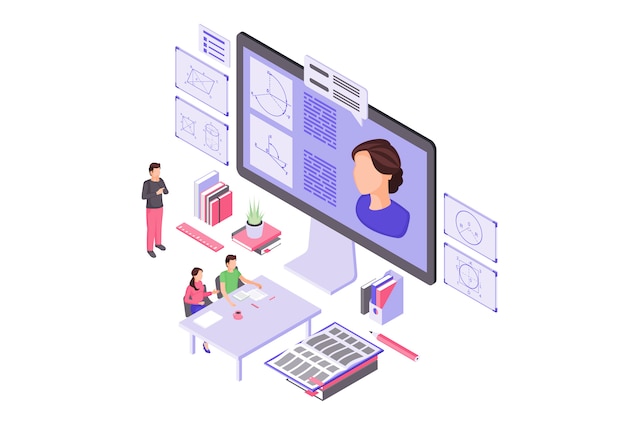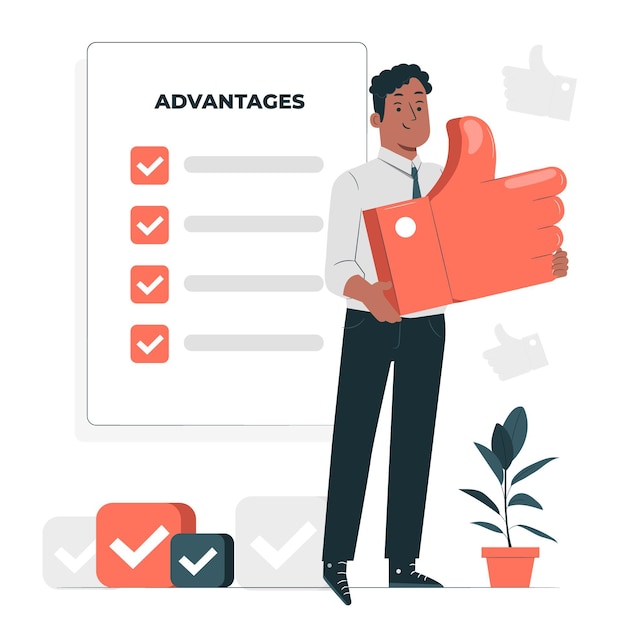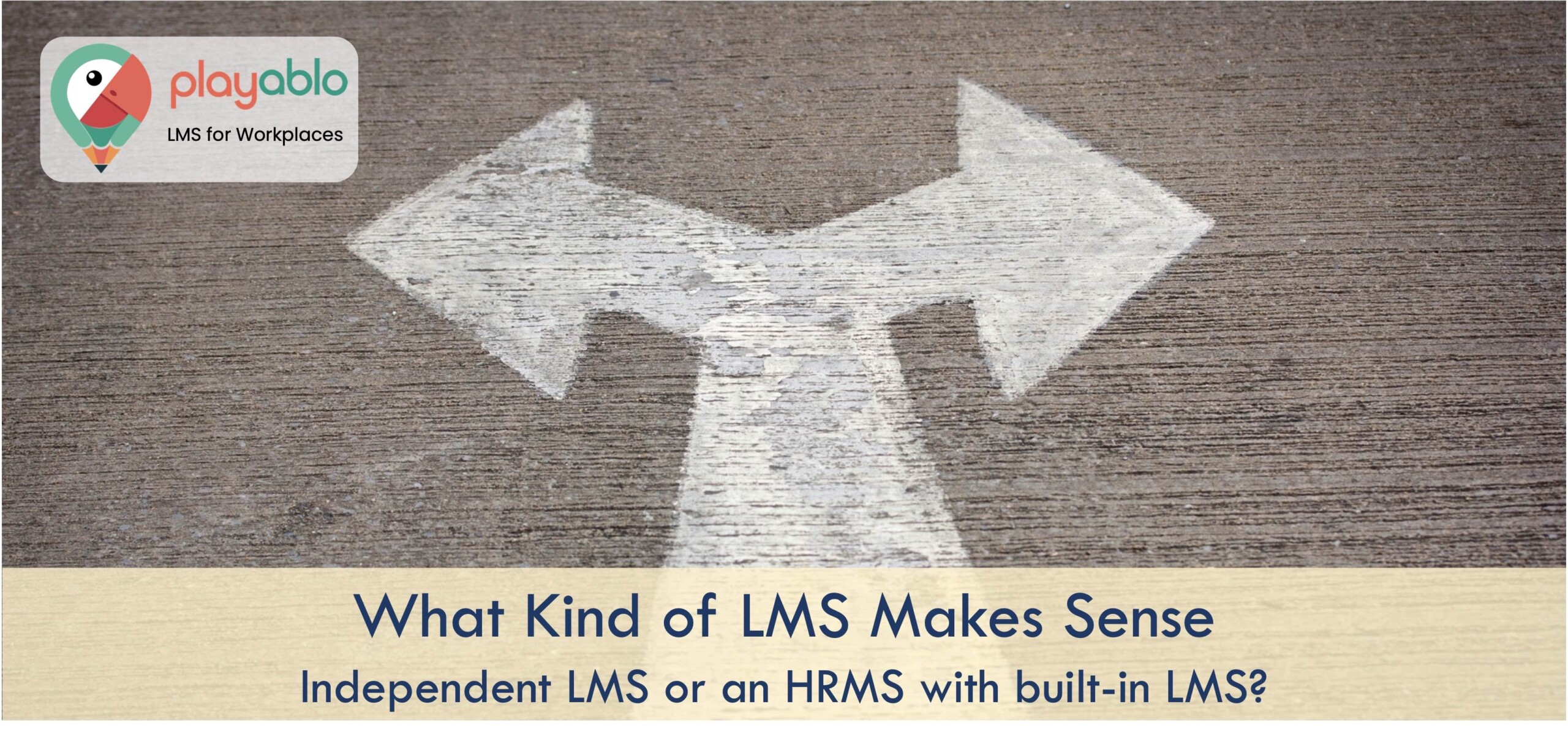The advantages of adopting a learning management system (LMS) to support their learning and development (L&D) function are becoming more widely understood by businesses. There is also the option to choose a human resource management system, aka HRMS with built-in LMS, as most companies’ HR departments are also undergoing digital makeovers. We’ll examine the benefits and drawbacks of both approaches today. We will also talk about the choice that would be better for your company.
Table of Contents
An HRMS With Built-in LMS

An independent LMS is a digital platform for training that builds, tracks, distributes and analyzes courses following your business needs.
Software used to organize and streamline staff training, HR procedures, compensation, and accounting is known as an HRMS. Each step of strategic planning and advancement in your company can be simplified using an HRMS with built-in LMS. Their unification enables a single system to assign, finish, and track training.
There is a third choice: you can handle and streamline employee training, HR procedures, payroll, and accounting by integrating an independent LMS with your HRMS.
Benefits of Utilizing an HRMS With Built-in LMS
Doing Away With Dual Records
Each employee’s records must reside in two different systems whenever the HRMS and LMS sections are independent. The HRMS will keep track of information, including attendance records, department names and titles, payroll processing information, and more. The LMS will keep track of the employee’s performance on different learning modules and their progress in picking up new, industry-specific skills. Thus, records from two sources must be evaluated to evaluate the same employee. Instead, you can keep the data about each worker in a centralized portal by using an HRMS with built-in LMS.
Onboarding New Employees
Training modules must be given to a new employee after onboarding to ensure a s/he is prepared to perform in their position. Upon onboarding a new worker, the HR team can quickly enroll him in the appropriate training program using an HRMS with built-in LMS. After the employee has finished the training, the HR division can let his designated line manager know he is prepared to join the team.
Performance Evaluation

Employees’ evaluation depends on their performance throughout the relevant period and the number and speed of new abilities they have acquired. The HR department could track the latter elements more simply if you had an HRMS with built-in LMS. Additionally, they have access to line manager comments on learning and how effectively the candidate employee has become able to apply new knowledge to regular work. As a result, the HR team would be capable of carrying out a more thorough review of the worker and deciding on pay raises and incentives accordingly.
Assigning Workers to the Correct Departments
Performance on several training modules will reveal an employee’s interests and the kind of work they are most suited for. Human resources can examine each employee’s unique goals, ambitions, and interests using an HRMS with built-in LMS. Such an evaluation can help with raises and lateral moves within the company. The organization can ensure higher employee engagement levels and reduce turnover rates by assisting employees in obtaining their desired roles.
Centralized Database
A built-in LMS-HRMS aids in creating a consolidated platform to integrate the complete employee lifecycle. You can digitally store the material and data in the elearning library. You can include eLearning modules, programs, and resources for each stage.
A smooth way to monitor your personnel throughout their learning journey is made possible by an HRMS. For example, by closely examining an employee’s responsibilities of the job duties and activities, performance on virtual learning evaluations received certifications, finished and remaining online classes, etc., you may evaluate the individual’s eLearning journey.
It’s true — an HRMS with built-in LMS indeed has certain benefits. There are multiple drawbacks, though, that we cannot overlook.
The Drawbacks of Using a Built-in LMS-HRMS

Unclear User Roles
The administration-related individual tasks were previously handled by your HRMS, which meant that determining who would carry out specific activities in your training courses was a largely manual procedure. The HRMS platform becomes overburdened when an HRMS with built-in LMS is used only for proper training and skills enhancement. If the HRMS and LMS are not correctly linked, problems may arise, particularly during compliance-related instruction.
Unanticipated Technical Issues
No matter how cautious you are, IT occasionally experiences unforeseen issues. Every other system built into the HRMS goes down if one system is down. Data integrity, payroll, and compliance in your HRMS could be impacted by system problems, lags or slow servers, connectivity problems, etc.
Data Security, Privacy, and Compliance Concerns
Sensitive personal information about individuals is stored in the HRMS system, which should not be visible on any other built-in systems. A built-in HRMS with an LMS could disclose the data or trample on compliance rules.
Negative Impact on Selling Training Courses
LMS provides more advanced methods to handle course selling than HRMS, which may not be able to do so. Difficulties with administering courses can arise from an ineffective built-in LMS-HRMS.
Issues with Branding and Customization
The ability to customize the LMS, or the lack thereof, can significantly impact how well your HRMS performs. Every firm has a unique training objective to fulfill with a specific sector at a particular expense. That flexibility is not available with every built-in LMS-HRMS.
Challenges in Producing and Publishing Materials
If your chosen LMS doesn’t adhere to SCORM, AICC, or xAPI (Tin Can) standards, you could be in serious difficulty with your built-in LMS-HRMS. Additionally, to build the courses for your LMS, the content production tools must accept various formats.
The answer? Purchasing an independent LMS. Investing in an independent LMS is the answer to overcoming the abovementioned drawbacks. Read on to see how.
How Can an Independent LMS Address the Gaps of a Built-in LMS-HRMS?
The sole objective of an independent LMS is training and development. However, utilizing L&D as an add-on to HRMS can make the system lose sight of its primary purpose, which is to assist workers in developing their abilities through corporate training. A built-in LMS-HRMS will undoubtedly complicate the system because an HRMS handles many HR-related tasks. As a result, we suggest using an independent LMS like PlayAblo, which regularly conducts updates and feature improvements for learning and development. Now let’s look at how an LMS fills up the holes left by a built-in HRMS-LMS.
Devoted Group of Professionals

Utilizing an independent LMS gives you access to a group of qualified professionals’ services. They include skilled instructors, trainers, and subject matter experts in L&D. Others are experienced in creating and constructing the core curriculum. What else? You can also speak with technical professionals to assist with your LMS’s deployment, integration, and upkeep.
Focused Solely on the Learning Process
Improved learning results result from an independent LMS’s single focus on learning. You can combine your LMS with other technologies like content management, content authoring software, social learning tools, and training material creation to increase learning efficacy. Delivering the desired L&D results is aided by evolving staff training programs, hybrid learning models, and online sessions via a separate LMS.
A Culture of Learning
“Journeys are similar to learning experiences. The journey begins where learning is currently and concludes when the learner succeeds. Knowing more won’t get you further; doing more will.” Jules Dirksen. Yes, your corporate culture of learning must include ongoing learning. The employee’s learning journey begins when they start working for your company. After all, learning is a biological necessity for humans! Employees learn about their responsibilities, skill sets, corporate policies, and coworkers while working for your firm.
An independent LMS aids in the alignment of your staff with the objectives, core principles, and overarching vision of your company. Then, you can ensure that this information is distributed evenly throughout the workforce. Although establishing a continuous learning culture may take some time, the benefits are substantial and numerous.
Specialized Platform With Unrestricted Access to eLearning Resources
Your audience has unrestricted access to the data required once you publish your eLearning teaching materials to the LMS and distribute them. So that they don’t have to wait until the next eLearning session to improve skills and perfect job-related activities, even individuals on the road can connect to the eLearning system via their tablets and smartphones. It is among the critical justifications for audiences worldwide in various time zones for why an independent LMS is necessary.
Independent Team in Charge of the LMS
You can access a dedicated staff handling your learning management system’s numerous features, such as product downtime, enhancement releases, etc. if you choose an independent LMS. All these functions are better managed without affecting any other HR functions.
Roles for Defined Users
The roles of administrators, supervisors, and educators are not adequately delineated in a built-in LMS-HRMS platform. However, there is a distinct line between the appropriate rights of each of these jobs in an independent LMS, allowing the platform to handle the learning process efficiently through automated database maintenance while upholding industry standards. An LMS also ensures that activities like material upload, course allocation, and assigning users to current reporting are explicitly set to prevent confusion after integration.
Minimal Tech Glitches

Most learning management systems are cloud-based or SaaS-based, with greater bandwidths for improved performance. To fulfill your organization’s demands for ongoing learning, they adhere to all applicable industry norms and utilize a dedicated content server when any volume is too big for effective dissemination.
Data Security, Privacy, and Compliance
The processed data in a trustworthy, autonomous LMS like PlayAblo complies with regional data privacy legislation. The learners can also receive training on data privacy compliance in accordance with cybersecurity standards through a learning management system. Administrators can pull learners’ information using an LMS to guarantee that the data (monitoring and mapping, catalogs) is accessed legitimately and without any gaps. You can use the LMS to mine learner data with the correct reporting.
Including Other Departments in the Process
Because an automated LMS syncs learning with other departments, it eliminates the requirement for the built-in LMS-HRMS. If necessary, you can provide them hands-on training to utilize the LMS following connection with other platforms, such as a CMS. Data reconciliation is crucial, and your LMS can help with that. Without any overlap in duties, the LMS can handle onboarding training and evaluation while the HRMS may be utilized to manage new hires.
Convenient Course and Training Program Sales
Online course sales can be successfully conducted on a platform with embedded e-commerce modules, payment processors, or LMS. Using data from statistics across gadgets, time zones, or even offline, it handles the inflow of trainees and the course catalog cost-effectively and quickly. To distribute the courses appropriately, the LMS also enables you to set the costs, rebates and offers for staff members, club members, and outside students. An LMS will supply the appropriate one to the relevant audience in addition to the pricing.
Easy Branding and Customization
Flexibility is guaranteed by an independent LMS, which you may adjust to your requirements, courses, and student volume.
Every role’s level of privileges—administrators, teachers, students, and stakeholders—are specified. What happens, once more, if the LMS doesn’t provide branded alternatives (white-labeled or branded mobile applications)? You can easily pick an LMS provider that provides these functionalities to create your brand and market them under your name. In addition to providing a superior student experience, a user-friendly, AI-based, and logically built LMS includes features like point-and-click functionality, gamification, certificates, etc.
Convenience in Content Creation and Publication
Creating interactive content, including audio, graphics, video, presentations, etc., is possible with an LMS that complies with AICC, SCORM, and xAPI. Embedded diagnostic tools eliminate integration problems with material for reporting. Your staff can benefit from the best-in-class training materials and experiences thanks to the premier and independent LMSs with third-party resource integration options.
Ad: PlayAblo’s Enterprise-Grade Micro-Learning platform is built for millennial learners. Micro-Learning and assessments and gamification features ensure learning outcome measurement and sustained engagement.
Find out more and request a custom demo!
Additional Advantages of Utilizing an Independent LMS

Streamlined Content in One Place
You may save your entire training materials in your centralized LMS rather than in folders scattered throughout the office or on numerous devices. All your documents will be in one place and available at all times.
Additionally, the possibility of losing crucial data decreases when you keep all of your data in a personalized, cloud-based LMS. There is no need to crawl around for information if a user seeks a specific document and cannot locate it because they can search for it using the search function and filter options.
Improved Collaboration
A learning management system serves as more than just a teaching aid. A contemporary LMS allows you to establish an open dialogue between your workers, encouraging a strong feeling of community at work, thanks to the linked collaboration and productivity tools. An LMS enables collaboration, increased employee engagement, questioning, and problem-solving between partners and workers. Learning management systems provide community-building capabilities like forums, message boards, notifications, blogs, and messaging.
Shorter Time Spent on Learning and Development
Since it provides online learners with only the information they require in a clear and structured manner, a learning management system can also shorten the time spent on online training. Online learners can quickly absorb the information by clicking on the required modules rather than sitting through a long half-hour online training course. Additionally, they can test their comprehension by completing online tests or quizzes, participating in interactive exercises and simulations, and watching eLearning videos explaining complicated procedures or jobs.
Quick, Easy Boost in the Size of eLearning Courses
You may easily log on to the learning management system and revise without completely recreating your eLearning course if you wish to add additional training courses to it to modify content based on emerging trends or scientific findings. Since all of the material is in one place, you may update just the main eLearning course before distributing it to every online learner. Contrast this with a traditional approach where you would need to give each participant an upgraded guide or updated leaflets.
Social Learning
Social learning is simple to incorporate into your eLearning plan with the help of a learning management system. You can include links to Twitter and Facebook sites, LinkedIn groups, and discussion boards, as the LMS is already available online. You might advertise your e-learning system on social media platforms and design assignments emphasizing peer collaboration to draw in new students.
Our Verdict
Undoubtedly, an HRMS built-in LMS has some advantages. You might think it lessens the strain of carrying out two activities at once and is a more economical choice. You cannot, however, rely on learning as a mere extension of your HRMS now that L&D is becoming a crucial component for enterprises. To avoid interruptions and functional duplication, you must invest in a separate LMS that focuses entirely on your learning requirements. It would help if you didn’t overburden your HR department with various employees’ training and development demands.
Our conclusion is that an independent LMS is essential for organizational and talent development. You can, however, also choose an LMS that has the potential of being integrated into an HRMS. You might think of PlayAblo, for instance. Even though we are an independent LMS, we integrate with market-available HRMS systems using a standard API. Maintaining employee records and onboarding new employees is straightforward with this connectivity. Would you like to give us a try? If so, give us a call right now!
Ad: PlayAblo’s Enterprise-Grade Micro-Learning platform is built for millennial learners. Micro-Learning and assessments and gamification features ensure learning outcome measurement and sustained engagement.
Find out more and request a custom demo!







Comments are closed, but trackbacks and pingbacks are open.